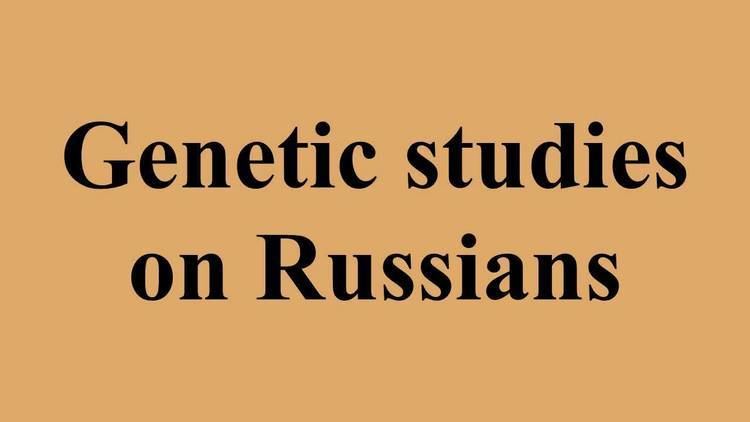 | ||
Genetic studies that modern Russians are closest to Belarusians and Ukrainians. Some ethnographers, like Zelenin, affirm that Russians overall are more similar to Belarusians and to Ukrainians than southern Russians are to northern Russians. Russians in northern European Russia share moderate genetic similarities with Uralic peoples, who lived in modern north-central European Russia and were partly assimilated by the Slavs as the Slavs migrated northeastwards. Southern Russians however tend to be genetically closer related to Caucasian peoples as a result of Russian expansion.
Contents
Y-DNA
Russians show the y-DNA R1a with frequencies ranging from 33.4% in North Russia to 49% in rest of Russia. R-M17 (and sometimes alternatively defined as R-M198), is particularly common in a large region extending from South Asia and Southern Siberia to Central Europe and Scandinavia.(Underhill 2009) and in parts of India. The percentages of Y-chromosome markers vary in ethnic Russian populations by latitude and region.
The top four Y-DNA haplogroups among the sample of 1228 Russians are:
Eight Y chromosome haplogroup subclades, of West Eurasian origin, presented an average frequency greater than 1%, including R1a, N3, I1b, R1b, I1a, J2, N2, and E3b. All together, they account for >95% of the total Russian Y chromosomal pool. Of the 1228 samples, 11/1228 (0.9%) were classified up to the root level of haplogroups F and K. Only 9/1228 samples (0.7%) fell into haplogroups C, Q, and R2 which are specific to East and South Asian populations.
mtDNA
The mitochondrial gene pool of Russians are represented by mtDNA types belonging to typical West Eurasian groups. East Eurasian admixture was shown to be minimal and existed in low frequencies in the form of Haplogroup M. The same studies indicate West Eurasian haplogroups present at a frequency of 97.8% and 98.5% among a sample of 325 and 201 Russians respectively.
Autosomal DNA
Autosomally, Russians are similar to populations in Eastern Europe.
